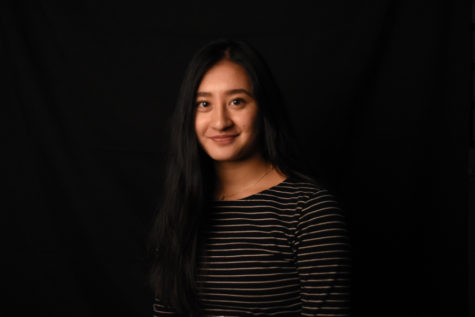Imagine being completely fluent in a language that is unspoken but visually understood. Where the movement of your body and mouth is the way you communicate with people around you. This is American Sign Language (ASL), claimed by Hand Speak to be “the fourth most used language in the United States.”
Both of junior Andrew Aydt’s parents are deaf, enabling him to become bilingual in English and ASL. Aydt became a native signer before he could speak.
“I learned sign language from my parents. I basically picked it up from them, and I’ve known it ever since I could remember,” Aydt said. “Sign language has made a big impact on my life because it’s a way I can communicate with different people and between my parents. I like signing, and I’ve been able to help people who are deaf in my community other than just my parents.”
One of the most widespread misconceptions about deaf culture is that sign language hinders speech development. However, according to Gallaudet University neuroscientist Dr. Petitto, “the brain cannot tell the difference between hands and lips when it comes to language.” Although sign language is visual, it is not easier or less important than verbal languages. Studies in neuroscience further prove that humans are not wired to learn only verbal languages because according to Hand Speak Organization, “language is not central to speech.”
These studies prove that it is not detrimental to brain growth for children growing up in deaf households to learn sign language before English. ASL teacher Tiffani Symons also believes that ASL should be looked at as a language and not as a barrier between the deaf and the hearing.
“How is knowing Spanish before English any different from knowing French before English? People think ASL is a ‘new’ foreign language, when it is not. It might be new to people, but ASL has been around in our community for a long time,” Symons said. “Deaf culture and [ASL] is so misunderstood, and people think just because we use our hands that it’s not a real or legitimate language.”
Having deaf parents, Symons encourages people to equate ASL as a language, not a simplistic language form for people with a disability.
“When you study linguistics, there are parameters that languages have to align with to be proven to be a language, and ASL aligns with all of those like any other foreign language we offer at West or any language in general. It is sad that ASL is always judged as ‘less than’ to every other language,” Symons said. “I try to educate other people and show them that ASL is just like any other language. It is different because it’s a visual language. We have our own methods of using english, such as glossing, and we have a strong structure for grammar”
ASL has not only made Aydt more independent, but also reliant on technology to easily communicate with his parents.
“My mom goes to work before I go to school, so if I’m sick, I have to text my mom to let her know, and then I call in sick. I’m more responsible for that stuff than most people I know,” Aydt said. “Being able to text my parents has been super helpful, because when I was younger, it was hard to let my parents know where I was because I couldn’t call them.”
Other than facing a few obstacles at home, Aydt and his family have faced a bigger problem in society: audism. This is a form of discrimination where someone’s ability to hear determines their value. Audism is also the system of having an advantage from hearing, judging or having negative attitudes towards a life without hearing and the metaphysical orientation linking human identity with speech, according to Gallaudet University.
“When I was younger people would make fun of the way my dad talked. I see people make deaf jokes or ‘fake sign’ with random hand movements once or twice a week. It does bother me when people make fun of deaf people and ASL because they don’t know how hurtful they are,” Aydt said. “People think that just because deaf people can’t hear that their speech is automatically bad. Deaf people are humans before their disability, and people should be careful about what they say to others.”
Aydt has been able to play hockey with a deaf team member and communicate with him to help him become successful on the team, and Aydt’s half-sister has started an ASL program at Parkway Central High to encourage more people to be educated about deaf culture and ASL.
“In certain situations, many deaf people have been taken advantage of and are always worried about people using them. It’s unfair that people with a disability have to work harder to have equal rights and abilities to other people,” Aydt said.

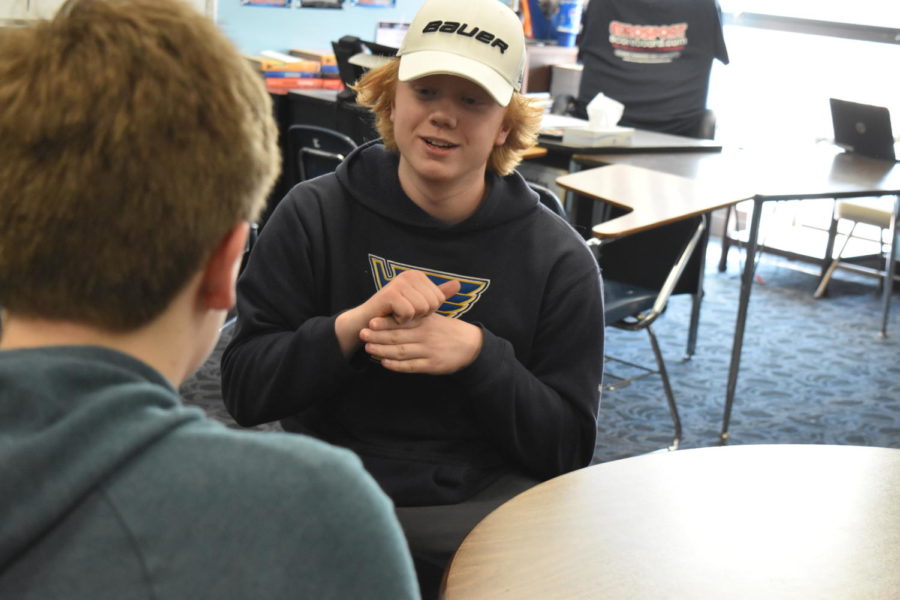

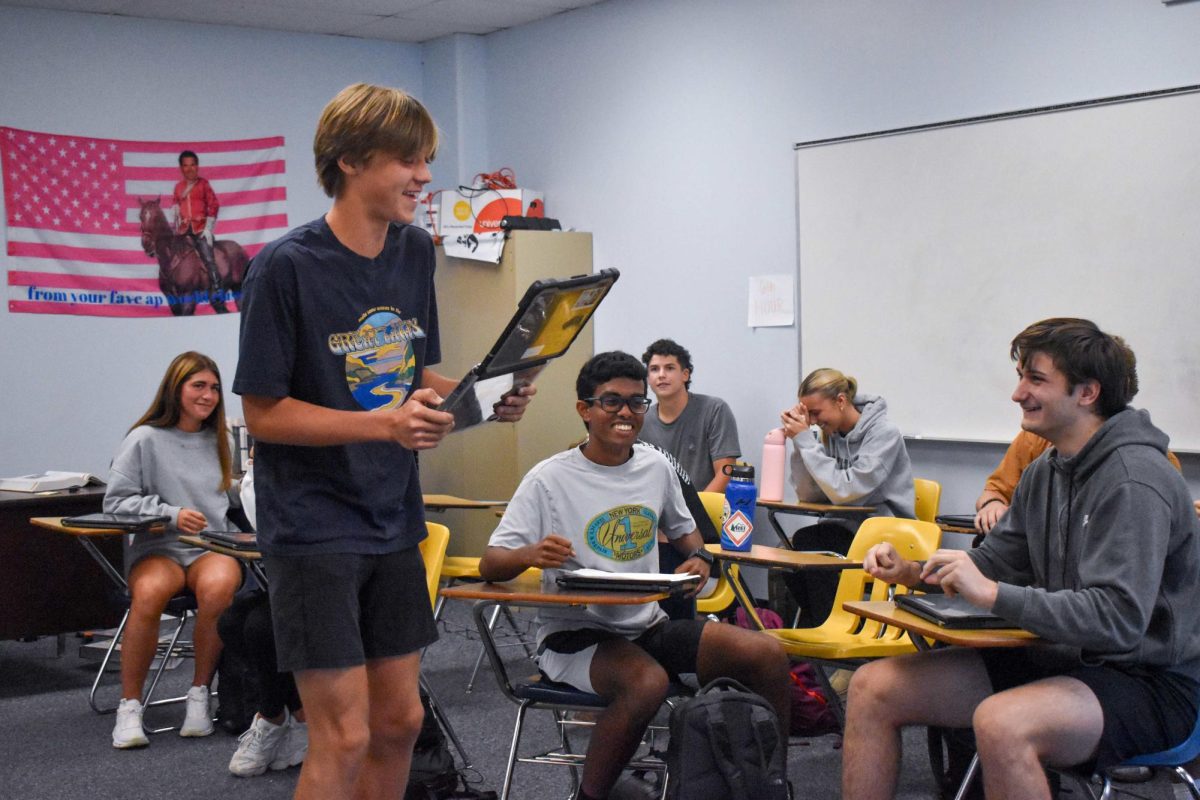
![Freshman Daphne Stokes looks at a table with Veterans Day flyers and information on Nov. 11. Stokes, along with other West High students, like senior Alexander Lewinski, passed by the table in the cafeteria with army recruitment information and giveaways for students to observe during lunch. “Talking with [the recruiters] has definitely helped me [find] where I wanted to go, more than anything else,” Lewinski said.](https://pwestpathfinder.com/wp-content/uploads/2025/11/DSC_1227-2-1200x800.jpg)
![Helping a customer, print room assistant Gretchen Williams operates her booth at the West High Craft Fair from Oct. 25-26. This was Williams’ first time participating in the Craft Fair with her new craft shop, Gs Beaded Boutique. “People have always said, over the years, ‘you should open something.’ [I replied that] I would rather just make [my crafts as] gifts for people. I just started [the online store] up, and it's been okay. I'm always surprised [by] how many views I get and [the] people from different states buying things; somebody from Alaska bought something the other day.”](https://pwestpathfinder.com/wp-content/uploads/2025/11/DSC0451-2-1200x799.jpg)
![Gesturing toward the club’s name on the board, Global Youth Aid co-president year Daniah Alsagheer discusses upcoming service projects with members during a meeting on Oct. 30. “We might be one club at one school, but together, we’re [part of] something much bigger,” Alsagheer said.](https://pwestpathfinder.com/wp-content/uploads/2025/11/DSC00949-1200x800.jpg)
![Focused on providing exceptional service, sophomore Darsh Mahapatra carefully cleans the door of a customer’s car. Mahapatra has always believed his customers deserve nothing less than the best. “[If] they’re trusting us with their car and our service, then I am convinced that they deserve our 100 percent effort and beyond,” Mahapatra said.](https://pwestpathfinder.com/wp-content/uploads/2025/10/DSC_0018-1200x800.jpg)
![Sophomore Aleix Pi de Cabanyes Navarro (left) finishes up a soccer game while junior Ava Muench (right) warms up for cross country practice. The two came to Parkway West High School as exchange students for the 2025-2026 school year. “The goal for the [exchange] program is to provide opportunities for both Parkway students and our international exchange students to learn about other cultures, build connections and become confident, capable, curious and caring — Parkway’s Four C’s — in the process,” Exchange Program Lead Lauren Farrelly said.](https://pwestpathfinder.com/wp-content/uploads/2025/10/Feature-Photo-1200x800.png)
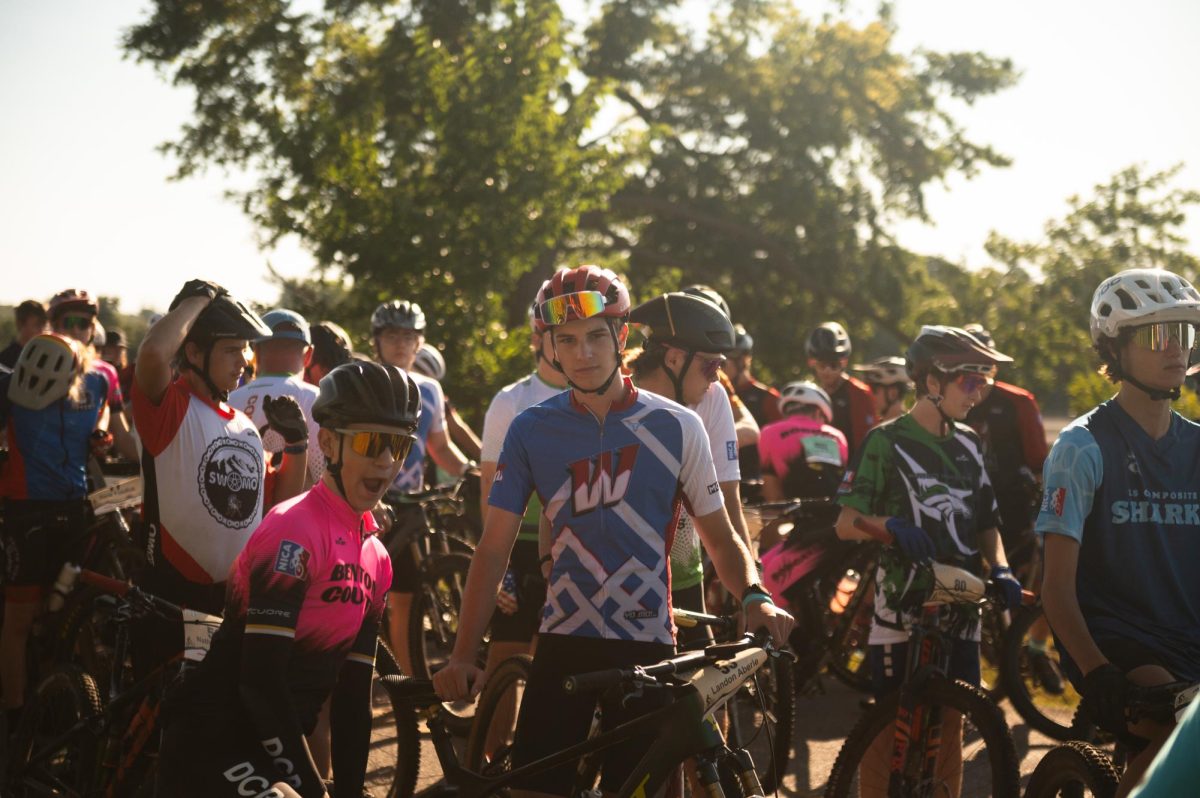
![Gazing across the stage, sophomore Alexis Monteleone performs in the school theater. The Monteleone family’s band “Monte and the Machine” has been releasing music since 2012, but Alexis started her own solo career in 2024 with the release of her first single, Crying Skies. “My whole family is very musical, [and I especially] love writing [songs with them],” Monteleone said.](https://pwestpathfinder.com/wp-content/uploads/2025/09/DSC7463-1200x798.jpg)
![Amid teaching a lesson to her AP Calculus BC class, Kristin Judd jokes alongside her students in their funny remarks. Judd has always enjoyed keeping the mood light in her classroom, along with on the volleyball court. “[I enjoy] that side talk where you see [or] overhear a conversation and chime in, or somebody says something funny,” Judd said.](https://pwestpathfinder.com/wp-content/uploads/2025/09/image-1200x730.jpg)
![Eyeing the ball, junior Ella McNeal poses for her commitment pictures at Clemson University. McNeal’s commitment comes after months of contact with top Division 1 soccer programs. “ It has taken a lot to get to where I am, but I know that [what] I've already been through is just the beginning, and I can't wait for what is to come,” McNeal said.](https://pwestpathfinder.com/wp-content/uploads/2025/09/IMG_4926-1200x900.jpeg)
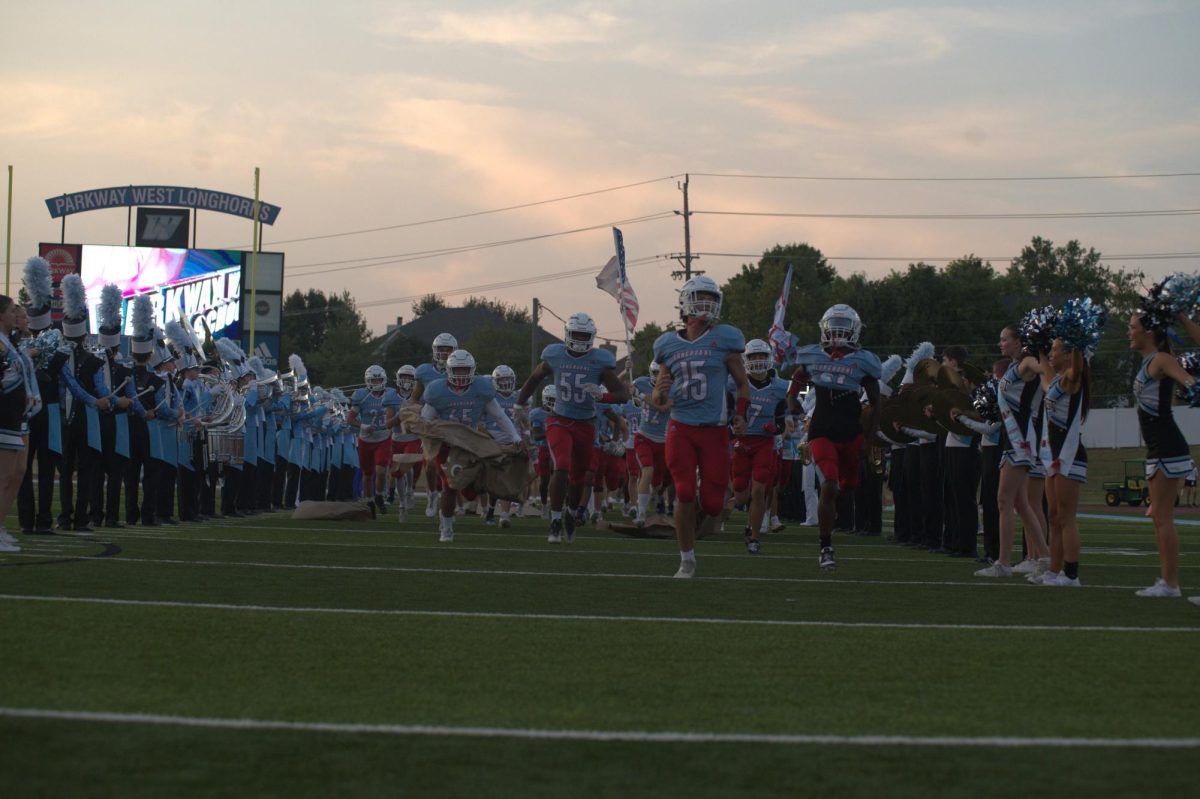
![Sophomore Shree Sikkal Kumar serves the ball across the court in a match against Lindbergh. Sikkal Kumar has been a varsity member of the varsity girls’ tennis team for two years, helping her earn the number two rank in Class 2 District 2.“When matches are close, it’s easy to get nervous, but I [ground] myself by[staying] confident and ready to play,” Sikkal Kumar said.](https://pwestpathfinder.com/wp-content/uploads/2025/11/DSC2801-1200x798.jpg)
![Dressed up as the varsity girls’ tennis coach Katelyn Arenos, senior Kate Johnson and junior Mireya David hand out candy at West High’s annual trunk or treat event. This year, the trunk or treat was moved inside as a result of adverse weather. “As a senior, I care less about Halloween now. Teachers will bring their kids and families [to West’s Trunk or Treat], but there were fewer [this year] because they just thought it was canceled [due to the] rain. [With] Halloween, I think you care less the older you get,” Johnson said.](https://pwestpathfinder.com/wp-content/uploads/2025/10/DSC00892-1-1200x800.jpg)
![Leaning on the podium, superintendent Melissa Schneider speaks to Parkway journalism students during a press conference. Schneider joined Parkway in July after working in the Thompson School District in Colorado. “My plan [to bond with students] is to get things on my calendar as much as possible. For example, being in [classes] is very special to me. I am trying to be opportunistic [meeting] kids [and] being in [the school] buildings. I have all the sports schedules and the fine arts schedules on my calendar, so that when I'm available, I can get to them,” Schneider said.](https://pwestpathfinder.com/wp-content/uploads/2025/09/IMG_5425-1200x943.jpeg)

![Leaping through the air, senior Tyler Watts celebrates his first goal of the season, which put the Longhorns up 1-0 against the Lafayette Lancers. Watts decided to play soccer for West for his last year of high school and secured a spot on the varsity roster. “[Playing soccer for West] is something I had always dreamed of, but hadn’t really had a good opportunity to do until now. It’s [really] fun being out [on the field], and I’m glad I decided to join the team. It’s just all about having fun with the boys and enjoying what time we have left together,” Watts said.](https://pwestpathfinder.com/wp-content/uploads/2025/09/DSC_1951-1200x855.jpg)

![Shifting global trade, President Donald Trump’s tariffs are raising concerns about economic stability for the U.S. and other countries alike. “[The tariffs are] going to pose a distinct challenge to the U.S. economy and a challenge to the global economy on the whole because it's going to greatly upset who trades with who and where resources and products are going to come from,” social studies teacher Melvin Trotier said.](https://pwestpathfinder.com/wp-content/uploads/2025/05/MDB_3456-1200x800.jpg)

![Pitching the ball on Apr. 14, senior Henry Wild and his team play against Belleville East. Wild was named scholar athlete of the year by St. Louis Post-Dispatch after maintaining a high cumulative GPA and staying involved with athletics for all of high school. “It’s an amazing honor. I feel very blessed to have the opportunity to represent my school [and] what [it] stands for,” Wild said.](https://pwestpathfinder.com/wp-content/uploads/2025/05/unnamed-6-1200x714.jpg)
